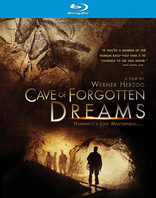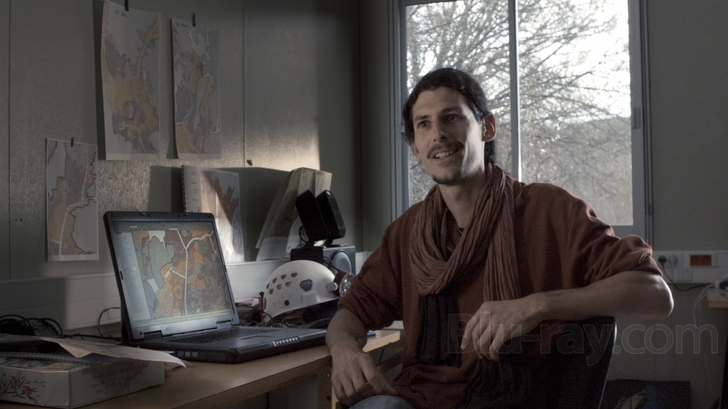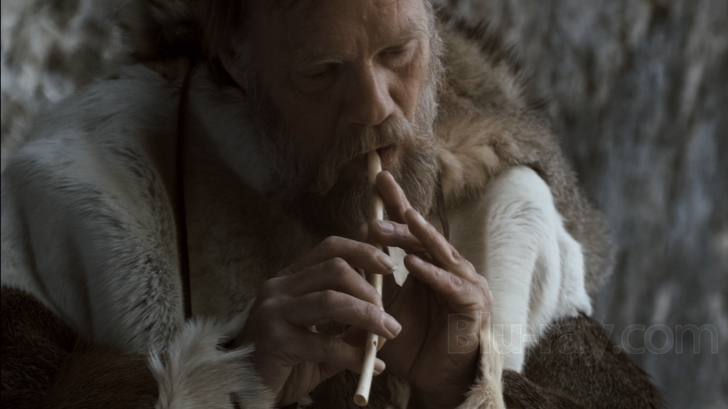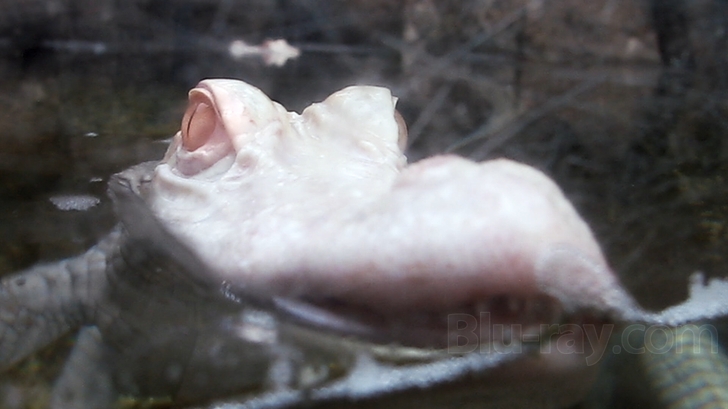Cave of Forgotten Dreams 3D Blu-ray Movie
HomeCave of Forgotten Dreams 3D Blu-ray Movie 
Blu-ray 3D + Blu-rayMPI Media Group | 2010 | 90 min | Rated G | Nov 29, 2011

Price
List price:Third party: $19.08 (Save 45%)
Listed on Amazon marketplace
Buy it from YesAsia:
Movie rating
7.3 | / 10 |
Blu-ray rating
| Users | 3.5 | |
| Reviewer | 4.5 | |
| Overall | 3.6 |
Overview
Cave of Forgotten Dreams 3D (2010)
Werner Herzog gains exclusive access to film inside the Chauvet caves of Southern France, capturing the oldest known pictorial creations of humankind in their astonishing natural setting.
Narrator: Werner HerzogDirector: Werner Herzog
| Documentary | Uncertain |
| Nature | Uncertain |
| History | Uncertain |
Specifications
Video
Video codec: MPEG-4 MVC
Video resolution: 1080p
Aspect ratio: 1.78:1
Original aspect ratio: 1.85:1
Audio
English: DTS-HD Master Audio 5.1
Subtitles
English SDH, Spanish
Discs
50GB Blu-ray Disc
Single disc (1 BD)
Blu-ray 3D
Playback
Region A (locked)
Review
Rating summary
| Movie | 4.5 | |
| Video | 3.5 | |
| Audio | 4.0 | |
| Extras | 2.0 | |
| Overall | 4.5 |
Cave of Forgotten Dreams 3D Blu-ray Movie Review
Lions, rhinos, and bears…oh my!
Reviewed by Casey Broadwater November 30, 2011Like it or not, 3D has taken over the multiplex and is increasingly making its way into home theaters. At its worst, it’s a gimmicky way to get movie
watchers to plop down extra cash for a murky, dim, sometimes even nauseating experience. At best, it’s…well, Cave of Forgotten Dreams,
Teutonic cinema shaman Werner Herzog’s latest documentary, which presents the most integral, holistic use of 3D in a film yet. The problem with
many 3D movies is that, aside from the temporary wow-factor, the extra dimensionality doesn’t really feel necessary. But in Cave of
Forgotten Dreams, the 3D presentation is absolutely essential, used to give us a nearly tangible feel for Herzog’s subject matter—the rock walls of
the Chauvet Cave in southern France.
Or, more precisely, what’s on those walls—stunning Paleolithic paintings that date back over 30,000 years, twice as old as any
previously found cave art. Though the paintings constitute one of the most significant cultural finds of all time, few will ever set eyes upon them, as
even the simple act of breathing inside the cave could cause mold spores to grow and cover the walls. Since its discovery in 1994, the cave—which was
sealed off 20,000 years ago by an avalanche—has been on literal lockdown, with small teams of scientists only permitted inside for a few weeks each
year. And that’s where Mr. Herzog comes in, graciously bringing us along on a guided tour of humanity’s oldest art gallery.

The "Lion Chamber" in the Chauvet Cave.
Herzog will probably be best remembered for his string of baroquely operatic fictional films starring the wild-eyed, tantrum-throwing Klaus Kinski— including Fitzcarraldo and Aguirre, the Wrath of God—but he is without question one of the most versatile and prolific of living filmmakers. It’s hard to think of another director who could so effortlessly transition between Grizzly Man and Rescue Dawn, Encounters at the End of the World and Bad Lieutenant: Port of Call New Orleans, drastically different films that—at the same time —are all unmistakably his.
Herzog’s particular talent for documentaries is in finding subjects that are odd, yes, but expressively human, almost spiritual in a completely non-religious, devotedly scientific way. In looking at the paintings in Cave of Forgotten Dreams, he doubts we’ll ever be able to truly “understand the vision of the artists through such an abyss of time,” but he presents the artwork they left behind as some of the earliest signs we have of the awakening of the “modern human soul.” The scale of time is nearly unimaginable, and inherently humbling. The oldest paintings in the cave are 32,000 years old, but there are others inside made up to 5,000 years later, a span nearly as long as all of recorded history. It makes today’s cycle of up-to-the-second Twitter updates and Facebook news feeds seem completely inconsequential in the grand scheme of things.
The paintings themselves are strikingly beautiful—much more accomplished than what you’d expect from primitive humans. Male and female lions are drawn proportionally and anatomically correct. Rhinos square off to battle, heads lowered and eyes visibly angry. Horses gallop across a landscape made of bulging rock, their mouths opened in almost audible whinnies. One bison is even drawn with eight legs to suggest motion, a nascent form of animation that Herzog—in his iconic Bavarian baritone—refers to as “proto-cinema.” In 3D, every crack, recession, and protuberance of the rock face is dimensionally visible, allowing us to see exactly how these ancient artists utilized the contours of the cave wall to add depth and movement to their tableaus.
Aside from a single scrawled image of a woman’s legs and pubic triangle—being seemingly embraced by a bison, no less—there are no depictions of humans inside the Chauvet cave. There are, however, poignant reminders that the cave was visited by actual individuals. Scrapes of charcoal reveal where torches were scratched on the wall to rekindle the embers. A child’s footprints are found next to those of a wolf, and Herzog wonders about three possibilities: 1.) the boy was hunted, 2.) the boy and the wolf were friends, or 3.) the prints were made thousands of years apart. Upon entering the cave, one of the first sights is an enormous boulder covered in vivid ochre handprints. From the size and placement— and the presence of a slightly crooked pinky finger—scientists can tell these were made by a single human man who stood just under six feet tall. We can never know why he was compelled to press his palm repeatedly up against this rock, but the reminder that one man made these marks—one man who lived and breathed and presumably broke his pinky at some point in distant history—is absolutely mind-blowing. It’s also baffling to think that while Homo Sapiens were etching out intricate line drawings inside the Chauvet cave, their evolutionary rivals, the Neanderthals—who left no evidence of pictorial art—were still roaming through Europe, soon to die out.
In typical Herzog fashion, the film is populated with sometimes kooky, sometimes profound, but always stranger-than-fiction characters. We meet an Einstein look-a-like who gives us a lesson in spear-throwing, and a master perfumer who sniffs the countryside, smelling for drafts that might indicate the presence of undiscovered caves. There’s a circus performer-turned-scientist who had vivid dreams of lions after spending five days in Chauvet, and an “experimental archeologist” who—I kid you not—dresses in reindeer pelts and plays “The Star-Spangled Banner” on a reproduction of a Paleolithic flute made from the arm-bone of a badger. Throughout, Herzog gives his characteristically terse-but-poetic narration, posing unanswerable questions about existence. A strange post script coda tries a bit too hard to compare modern humans with the “mutant albino crocodiles” that—believe it or not—live in a nuclear-powered greenhouse “twenty miles, as the crow flies” from Chauvet, but this is perhaps the only flaw in a monumentally beautiful film about the mysteries of time and humanity. We’re left wondering—what sparked that fire of creative consciousness in our ancestors?
Cave of Forgotten Dreams 3D Blu-ray Movie, Video Quality 

Cave of Forgotten Dreams may be the best conceptual use of 3D in a film recently, but it's far from the best implementation. When he first ventured into the cave, Herzog and his crew had only a small rig consisting of two non-pro HD cameras quite literally gaffer-taped together to create a stereoscopic view. Even on their later excursions, where they used more professional 2K cameras, they had to adjust the distance between the two lenses on the fly and film only by the light of heatless LED panels. Working under such restrictive conditions, there was no time for precision, so alignment issues and rolling shutter problems had to be fixed frame-by-frame in post-production. Still, remnants of the by-the-seat-of-their-pants filming process remain. Noise is extremely heavy during the early portions of the film, as the cameras were trying to compensate for the low lighting conditions, and you'll notice some strong crosstalk in the 3D image, which can be distracting—even disorienting—during shots that have lots of hanging stalactites or swaying tree branches. Clarity is mixed. There are some shots and sequences that look downright blurry, but others that are fantastically sharp, allowing us to make out the textures of the rock walls. I did watch the film in the theater earlier this year, and I can at least say that the 3D Blu-ray presentation accurately matches what I remember seeing, warts and all. But try not to let those warts distract you. Cave of Forgotten Dreams should definitely be watched in 3D, as the extra depth gives a truer vision of what the paintings actually look like. The disc also includes the 2D version of the film, which looks fine but lacks the dimensional impact.
Cave of Forgotten Dreams 3D Blu-ray Movie, Audio Quality 

The documentary's DTS-HD Master Audio 5.1 surround track also shows occasional signs of the quick-and-dirty filming process, but there's nothing overtly distracting here. While scientists recorded on location in the caves can sound somewhat muffled at times, the interviews set elsewhere are clean and distortion-free. Herzog's own sonorous voice—which I could listen to for days—is also clear and balanced. The main allure of this mix, though, is frequent Herzog collaborator Ernst Reijseger's fantastic score, which mixes floating voices, rich cello, and darting flute sounds. The music is spread throughout all 5.1 channels and is very easy on the ears. The disc includes optional English SDH and Spanish subtitles.
Cave of Forgotten Dreams 3D Blu-ray Movie, Special Features and Extras 

- Ode to the Dawn of Man (1080i, 39:16): Billed on the back of the case as a "Short Film by Werner Herzog," this is really just edited footage of composer Ernst Reijseger and his musicians recording the film's score. Not that this isn't interesting—it is—but when I expected a new "Short Film by Werner Herzog" my expectations were raised much too high.
- Trailer (1080p, 2:11)
Cave of Forgotten Dreams 3D Blu-ray Movie, Overall Score and Recommendation 

One of the first major documentaries to use 3D, and one of the first films in general to truly exploit the possibilities of 3D, Werner Herzog's Cave of Forgotten Dreams is an awe-inspiring journey back to the dawn of human creativity and easily one of my favorite films of 2011. The quality of the 3D image on this Blu-ray disc may not thrill you—this is no Avatar—but if there's any humanity inside you whatsoever you'll be bowled over by the subject matter. This is transcendent documentary filmmaking. Highly recommended.
Similar titles
Similar titles you might also like

Mummies: Secret of the Pharaohs
IMAX
2007

IMAX: Hubble 3D
2010

Galápagos 3D
IMAX
1999

Grand Canyon Adventure: River at Risk 3D
IMAX 3D
2008

Ocean Wonderland 3D
2003

Under the Sea
IMAX
2009

WWII in 3D
2011

Deep Sea 3D
IMAX
2006

The Ultimate Wave: Tahiti 3D
IMAX
2010

The Universe: The Complete Season Seven
Ancient Mysteries Solved
2013

Flying Monsters 3D
2011

Wild Ocean
IMAX
2008

Space Station 3D
IMAX
2002

Life After People
2008

Sharks 3D
2004

Kingdom of Plants 3D
Kew 3D
2012

Into the Deep 3D
IMAX
1994

Arabia 3D
IMAX
2010

Encounters at the End of the World
2007

Sea Rex 3D: Journey to a Prehistoric World
2010